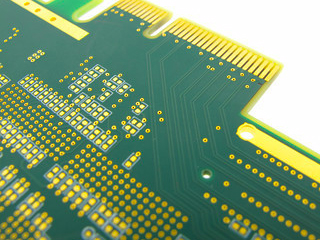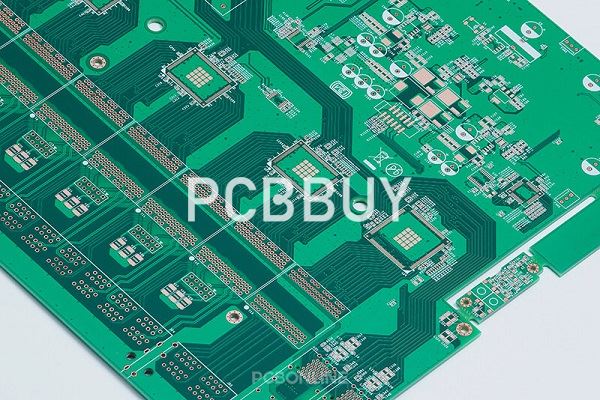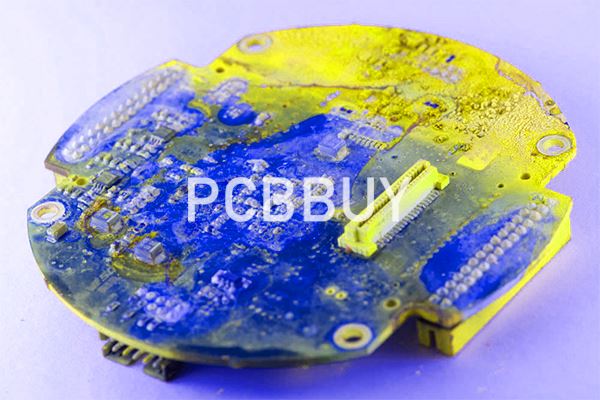What is Halogen Free PCB and Why to Use it?
By:PCBBUY 12/21/2021 09:51

Like the RoHS lead free requirements, halogen free standards require CMs to use new materials and manufacturing methods. Like with any standard halogen free specific limits that are set by various organizations. The IEC defines halogen free as < 900 ppm of chlorine and bromine and < 1500 ppm total halogens, while the RoHS has its own limits.
Now why is “halogen free” in quotations? It’s because meeting the standard doesn’t necessarily guarantee your board has no halogens in it. For example, the IPC specifies tests for detecting halogens in PCBs, and these tests generally detect ionically bonded halogens. However, most of the halogens found in fluxes are covalently bonded so the test won’t detect them. This means that to make a truly halogen free board, you’ll need to go beyond what the standards specify.
If you are searching for halogen-free PCB, please check and read the content below in thie passage.

What are the advantages of halogen-free PCB?
Halogen-free PCBs can be used in any industry or application where you would use electronic PCB boards, from consumer electronics to industrial automation and everything in between. What are the benefits of using halogen-free PCBs? First, it's important to understand that halogen is not a material in itself. It is a way to describe a class of elemental gases, including fluorine, chlorine, bromine, iodine and astatine. While PCBs containing halogen gases are generally safe, these elements are toxic and can cause reactions from blurred vision and nausea to difficulty breathing and a burning sensation in the eyes, nose and throat.
Although all companies can make use of halogen-free PCBs, they appear most often in companies made a forward commitment to being better to the environment, reducing their carbon footprint and being responsible about the toxins they emit into the atmosphere as a result of their production processes.
What are the disadvantages of halogen-free PCB?
As we mentioned above, Halogen means fluorine (F), chlorine (CL), bromine (Br), iodine (I), Atastatium (At). Additionally, it gets famous as all the halogen elements have numerous advantages for the flame retardant period. Particularly chlorine (CL) and bromine (Br) are frequently utilized in flame retardant for electronics matters.
So many often used printed circuit boards like FR4 PCB, and CEM3 PCB comprise halogen-containing flame retardants. Some institutions researched and have shown us regarding this matter that halogen-containing flame retardant equipment are very harmful to us as it emits a huge quantity of highly destructive and toxic gas with the terrible smell during it gets burning, that has the capacity of affecting our beloved environment furthermore carcinogenic to human beings.
Why we choose halogen-free PCB?
Halogen-free PCB is often mentioned when it comes to PCB manufacturing in recent years. According to the JPCA (Japan Circuit Association)-ES-01-2003 standard: Copper-clad laminates with chlorine (Cl) and bromine (Br) content of less than 0.09% Wt (Weight-ratio), respectively, are defined as halogen-free copper-clad laminates (at the same time, CI +Br total ≤0.15% [1500PPM]). A halogen-free PCB is made by halogen-free copper-clad laminate.

One proof was that RoHS was enacted on July 1, 2006, prohibiting the use of two halogenated flame retardants: polybrominated biphenyls (PBB) and polybrominated diphenyl ethers (PBDE). And then in 2008, tetrabromobisphenol A (TBBPA) and hexabromocyclododecane (HBCD or HBCDD) were added to this list, while PBB, PBDE, and TBBPA were just right the most important flame retardants ever used in PCBs.
Currently, the inclusion of PBB and PBDE has been banned from use in electronic materials by the European Union and China. In order to achieve sustainable development, it is necessary to ban halogen.
What are the applications of halogen-free PCB?
What types of industries and applications are halogen-free PCBs typically used in? Halogen-free PCBs can be used in any industry or application where you would use electronic PCB boards, from consumer electronics to industrial automation and everything in between. While there is some variance in the specifications of halogen-free PCBs compared to PCBs which contain chemicals like chlorine and bromine, these boards are entirely effective and suitable for most applications.
If you're concerned about how halogen-free boards will work with your specific application but would still like to try them, feel free to give us a call to discuss the issue. Our PCB experts will be more than happy to talk to you about the differences between halogen-free PCBs and other printed circuit boards, as well as how those differences may or may not affect your specific product.
Although all companies can make use of halogen-free PCBs, they appear most often in companies made a forward commitment to being better to the environment, reducing their carbon footprint and being responsible about the toxins they emit into the atmosphere as a result of their production processes.
Industry Category











